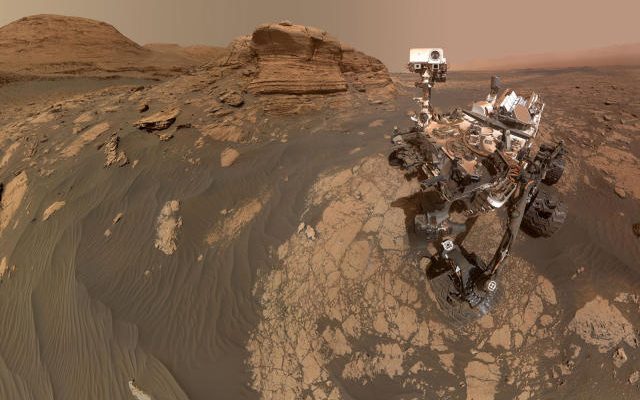By Adrew
New evidence has been found that a wet-dry cycle once existed on Mars – one of the essential things needed for life.
A new paper published in Nature examined images taken by the Curiosity rover on Mars of ancient mud cracks.
The team looked at the distinctive hexagonal pattern and found they were likely evidence of high-frequency wet-dry cycles, which point towards a sustained, cyclic and maybe even seasonal climate on Mars about 3.7 billion years ago.
The authors believe the mud patterns indicate there may have even been an “Earth-like climate regime and surface environments favorable to prebiotic evolution”.
That last phrase is critical because prebiotic evolution is thought to be the stage that took place on Earth right before living entities emerged.
Curiosity has been slowly moving up the 5km-high Mount Sharp on Mars. It found the ancient mud cracks in 2021 after drilling from a rock named “Pontours”, according to a press release from NASA.
“This is the first tangible evidence we’ve seen that the ancient climate of Mars had such regular, Earth-like wet-dry cycles,” the paper’s lead author William Rapin said, who is from France’s Institut de Recherche en Astrophysique et Planétologie.
“But even more important is that wet-dry cycles are helpful – maybe even required – for the molecular evolution that could lead to life.”
Scientists believe that the right balance of water is needed to sustain life. The wet-dry cycle is important as it is conducive to the creation of long chains of carbon-based molecules called polymers – including nucleic acids, which are the building blocks of life.
Ashwin Vasavada of NASA’s Jet Propulsion Laboratory in Southern California said the finding expanded the kind of discoveries Curiosity had made.
“Over 11 years, we’ve found ample evidence that ancient Mars could have supported microbial life. Now, the mission has found evidence of conditions that may have promoted the origin of life, too.”
The lack of tectonic activity on Mars is a benefit as it allows scientists to gather evidence that has been disturbed on Earth.
There has long been speculation about extraterrestrial life due to the gigantic size of the cosmos.
There are about 200 billion galaxies in the observable universe each containing on average 100 billion stars – many of which likely have planets.
There could even be life in other places within our solar system, with the moons Europa, Enceladus and Titan among the candidates.
It’s thought abiogenesis took place on Earth about 4.3 billion years ago, with life possibly forming in hydrothermal environments.
However, it’s also possible that life arrived on Earth from another place, transported by comets and asteroids.




